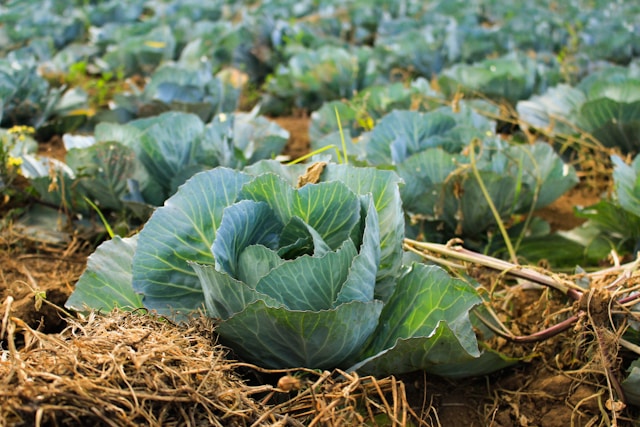Physical Address
304 North Cardinal St.
Dorchester Center, MA 02124
Physical Address
304 North Cardinal St.
Dorchester Center, MA 02124

Knowing what to plant in a fall vegetable garden can transform your gardening experience, extending your harvest season well into the cooler months. Many fall vegetables thrive in these conditions, and some even become sweeter after exposure to a light frost.
When planning what to plant in a fall vegetable garden, start by looking for cool-season seedlings at local nurseries. These are usually available at the right time for planting fall vegetables. Alternatively, you can grow plants from seed, ensuring enough time for germination and maturity before frost sets in.
Fall gardening has distinct advantages over summer gardening. Cooler temperatures mean fewer pests and diseases, and many vegetables that struggle in heat thrive in the crisp autumn air. If you’re not a fan of summer’s heat, humidity, and constant maintenance, learning what to plant in a fall vegetable garden can make the process more enjoyable.
Most cool-season crops tolerate frost and light freezes, but depending on your region, some plants may need additional protection during extreme cold.
Here’s a list of some of the best crops to include when planning what to plant in a fall vegetable garden:
Arugula: Fast-growing and ideal for cooler weather, arugula germinates in about 5–7 days. Its peppery flavor adds zest to salads.
Beets: Plant seeds 10–12 weeks before the first frost or use seedlings for a faster harvest. Beets are best harvested when 2–2.5 inches in diameter.
Broccoli: Direct sow seeds in late summer or early fall for a successful harvest. Stagger planting for a continuous supply of fresh broccoli. Frost enhances its sweetness.
Brussels Sprouts: One of the hardiest fall crops, Brussels sprouts thrive after frost. Direct sow seeds while the soil is warm or use transplants for a quicker start.
Cabbage: Direct seed in late summer. Choose smaller-headed varieties for a faster harvest and enjoy the sweetness of fresh, homegrown cabbage.
Carrots: These root crops germinate in about 7 days but require thinning for proper spacing. Sow seeds no later than 10 weeks before the first frost.
Cauliflower: Start seedlings in late summer for a fall harvest. Mature heads are frost-sensitive, so timing is key.

Chinese Cabbage: Sow seeds about 8 weeks before the first frost. Varieties like bok choy and pak choi are perfect for stir-fries.
Garlic: Plant cloves in mid-fall for a harvest the following summer. Garlic is incredibly easy to grow and a flavorful addition to any kitchen.
Kale, Collards, and Mustard Greens: These superfoods thrive in the fall and are hardy against frost. Their vibrant leaves also add visual appeal to the garden.
Kohlrabi: With its unique appearance, kohlrabi is fast-growing and frost-tolerant. Harvest as needed and protect with straw during cold snaps.
Lettuce: Sow seeds or use transplants starting 8 weeks before the first frost. Successive plantings every two weeks ensure fresh lettuce throughout the season.
Onions: Choose short-day or long-day varieties based on your region. Onions grow through winter and are ready for a summer harvest.
Peas: Sow seeds in late summer to early fall. Sugar snap and snow peas thrive in cool weather and are perfect for adding vertical interest to your garden.
Radishes: These quick-growing vegetables can be ready to harvest in less than 30 days. Their peppery flavor is perfect for salads and roasting.
Spinach: Sow seeds in early fall and enjoy a harvest that lasts into winter. Spinach is frost-hardy and provides fresh greens even in cooler weather.
Swiss Chard: With its vibrant stems, Swiss chard is both beautiful and resilient. Sow seeds about 10 weeks before the first frost for a productive and decorative garden addition.
To maximize your success when deciding what to plant in a fall vegetable garden:
By knowing what to plant in a fall vegetable garden, you can enjoy fresh, homegrown produce long after summer ends. From leafy greens to root vegetables, fall gardening is a rewarding and enjoyable experience for gardeners of all levels.